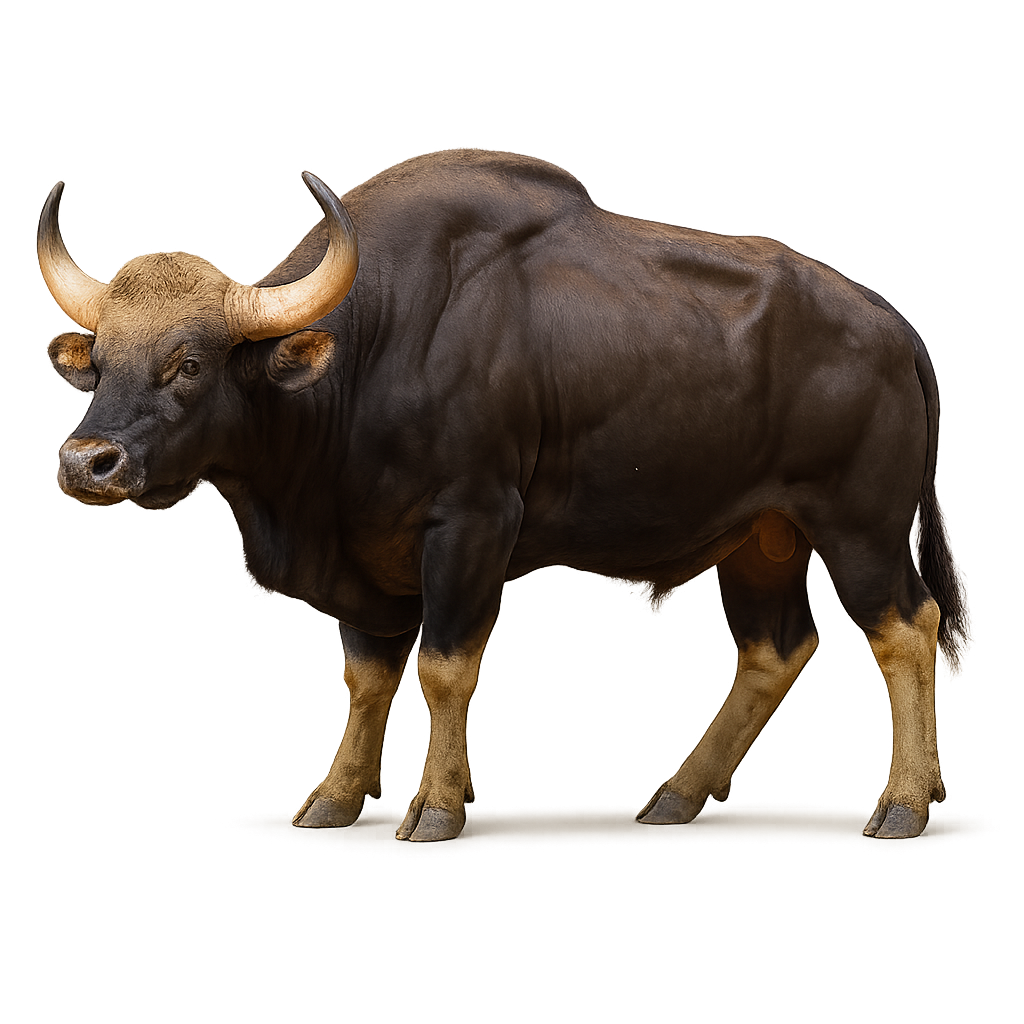Your wildlife photography guide.
Explore the gaur in detail, study its behavior, prepare your shots.
Where to observe and photograph the gaur in the wild
Learn where and when to spot the gaur in the wild, how to identify the species based on distinctive features, and what natural environments it inhabits. The WildlifePhotographer app offers tailored photography tips that reflect the gaur’s behavior, helping you capture better wildlife images. Explore the full species profile for key information including description, habitat, active periods, and approach techniques.
Gaur
Scientific name: Bos gaurus

IUCN Status: Vulnerable
Family: BOVIDAE
Group: Mammals
Sensitivity to human approach: Tolerant
Minimum approach distance: 50 m
Rut period: November to December
Gestation: 270-280 jours
Births: August to September
Habitat:
Tropical forests, grasslands, and mountainous areas of South and Southeast Asia
Activity period :
Mainly active at night, generally discreet during the day.
Identification and description:
The Gaur is a large bovine, considered one of the most impressive species of wild cattle. It stands between 1.8 and 2 meters at the withers and can weigh from 500 to 1,000 kg, with males generally being larger and heavier than females. Its coat is dark, typically black or dark brown, with light markings on the legs and a distinctive mane around the neck. The Gaur primarily inhabits dense forests and mountains in South and Southeast Asia, especially in India, Nepal, Indonesia, and Malaysia. Herbivorous, it primarily feeds on grasses, young shoots, leaves, and fruits. The Gaur is a social animal, living in groups, although it is often observed alone or in small groups while foraging. Due to hunting, habitat loss, and conflicts with human populations, the Gaur is listed as vulnerable by the International Union for Conservation of Nature (IUCN).
Recommended lens:
200 mm – adjust based on distance, desired framing (portrait or habitat), and approach conditions.
Photography tips:
To photograph the gaur, a telephoto lens is essential to capture stunning images of this majestic wild bovid without disturbing its natural behavior.
Try photographing early in the morning or at dusk, when gaurs are most active and the soft light highlights their muscular build, curved horns, and dark coat.
Observe them from a distance in dense forests, clearings, or wooded grasslands, often in small herds. Their impressive size commands respect, and getting too close—especially near calves—can make them uneasy.
Be discreet, quiet, and patient. The gaur is vigilant but generally calm if undisturbed. Avoid sudden movements and always maintain a safe distance.
The Gaur is classified as a Vulnerable species by the IUCN. Habitat loss, forest fragmentation, and human disturbance are increasing threats. Ethical wildlife photography is key to supporting the conservation of this magnificent species.
The WildlifePhotographer App is coming soon!
Be the first to explore the best nature spots, track rutting seasons, log your observations, and observe more wildlife.
Already 1 449 wildlife lovers subscribed worldwide

